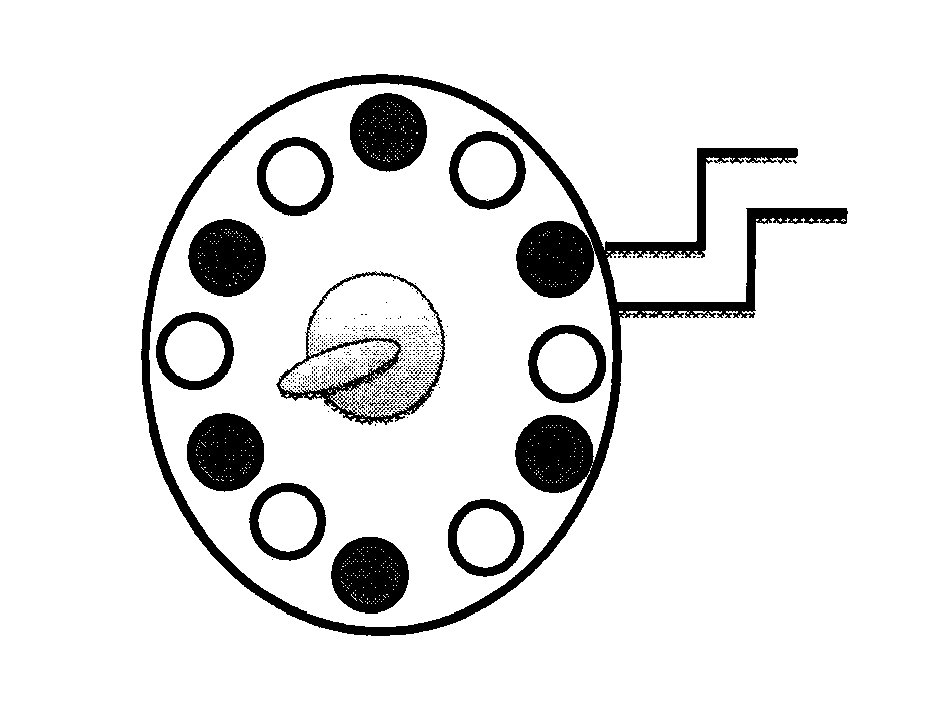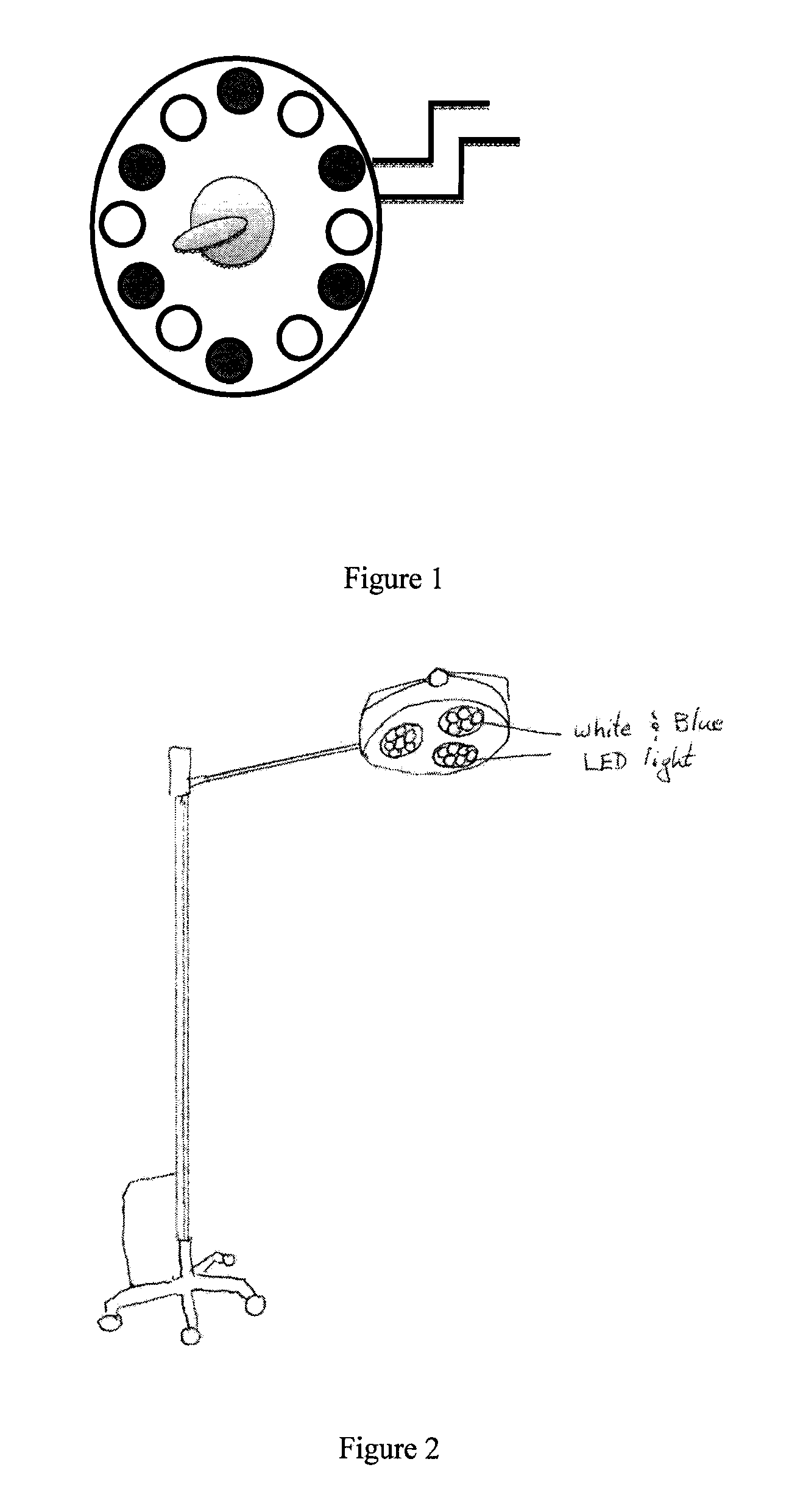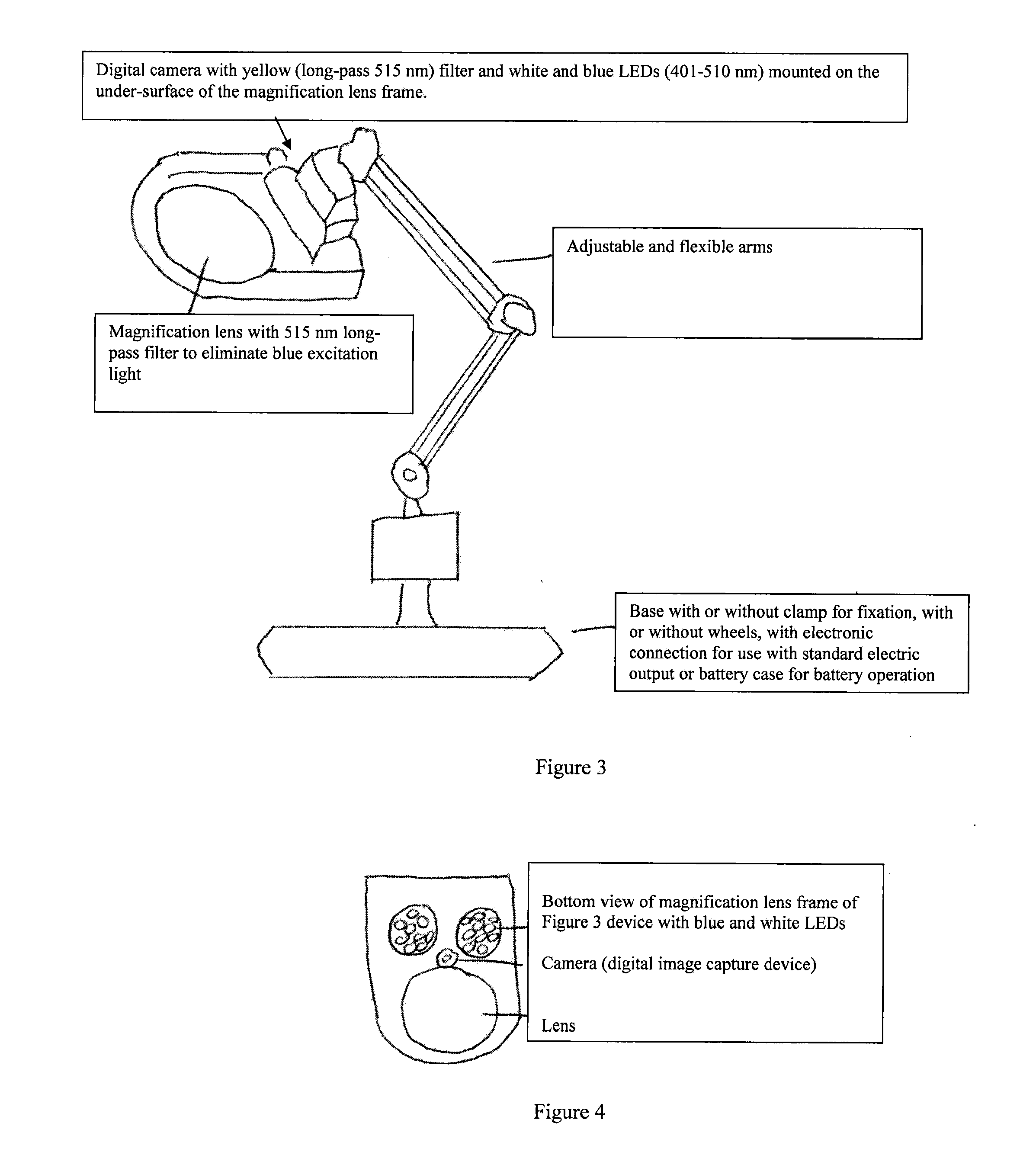Surgical lighting sources for use with fluophore-tagged monoclonal antibodies or fluorophore-tagged tumor avid compounds
a technology of fluorophore and fluorescent dye, applied in the field of medical devices, can solve the problems of difficult identification of tumors, inability to use fluorescent dyes in tumor diagnosis, and difficulty in identifying tumors, etc., and achieve the effect of easy identification and less cos
- Summary
- Abstract
- Description
- Claims
- Application Information
AI Technical Summary
Benefits of technology
Problems solved by technology
Method used
Image
Examples
Embodiment Construction
[0031]The present invention describes devices for in vivo identification of diseased tissue in a subject in need thereof. The invention includes a variety of light sources for irradiating an in vivo body part of the subject containing tumor tissue or other diseased tissue with light having at least one excitation wavelength in the range from about 401 nm to about 500 nm. Fluorescence emanating from a fluorescent targeting construct administered to the subject and which has specifically bound to and / or been taken up by the diseased tissue in the body part, in response to the at least one excitation wavelength (i.e., 470-495 nm range) is directly viewed to determine the location and / or surface area of the diseased tissue in the subject.
[0032]The devices and methods described herein relate to and are intended for use with fluorescence imaging technology as described in U.S. Pat. Nos. 6,652,836, 6,299,860 and 6,284,223, all titled “Method For Viewing Diseased Tissue Located Within A Bod...
PUM
 Login to View More
Login to View More Abstract
Description
Claims
Application Information
 Login to View More
Login to View More - R&D
- Intellectual Property
- Life Sciences
- Materials
- Tech Scout
- Unparalleled Data Quality
- Higher Quality Content
- 60% Fewer Hallucinations
Browse by: Latest US Patents, China's latest patents, Technical Efficacy Thesaurus, Application Domain, Technology Topic, Popular Technical Reports.
© 2025 PatSnap. All rights reserved.Legal|Privacy policy|Modern Slavery Act Transparency Statement|Sitemap|About US| Contact US: help@patsnap.com



